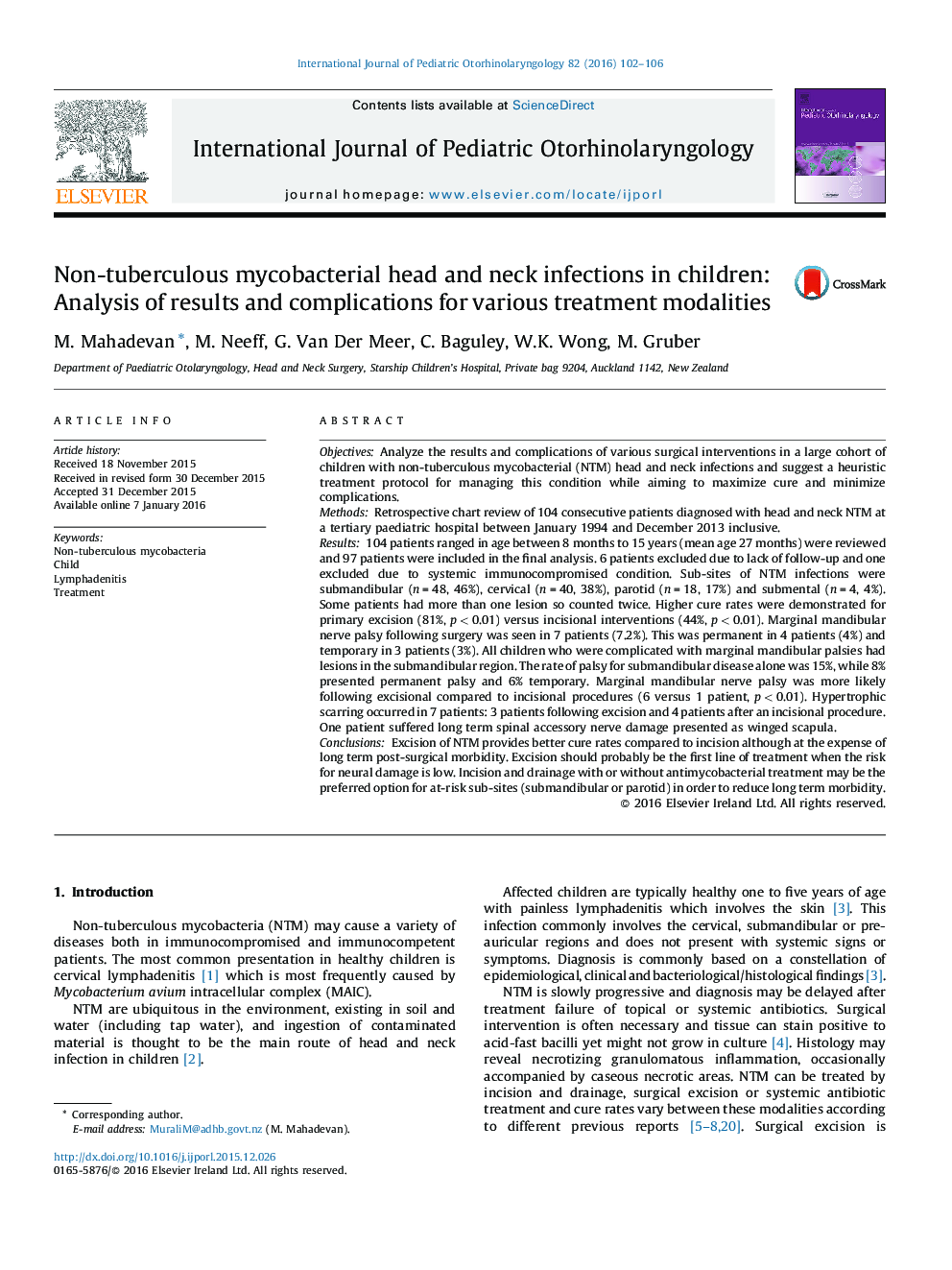| کد مقاله | کد نشریه | سال انتشار | مقاله انگلیسی | نسخه تمام متن |
|---|---|---|---|---|
| 4111369 | 1605986 | 2016 | 5 صفحه PDF | دانلود رایگان |
ObjectivesAnalyze the results and complications of various surgical interventions in a large cohort of children with non-tuberculous mycobacterial (NTM) head and neck infections and suggest a heuristic treatment protocol for managing this condition while aiming to maximize cure and minimize complications.MethodsRetrospective chart review of 104 consecutive patients diagnosed with head and neck NTM at a tertiary paediatric hospital between January 1994 and December 2013 inclusive.Results104 patients ranged in age between 8 months to 15 years (mean age 27 months) were reviewed and 97 patients were included in the final analysis. 6 patients excluded due to lack of follow-up and one excluded due to systemic immunocompromised condition. Sub-sites of NTM infections were submandibular (n = 48, 46%), cervical (n = 40, 38%), parotid (n = 18, 17%) and submental (n = 4, 4%). Some patients had more than one lesion so counted twice. Higher cure rates were demonstrated for primary excision (81%, p < 0.01) versus incisional interventions (44%, p < 0.01). Marginal mandibular nerve palsy following surgery was seen in 7 patients (7.2%). This was permanent in 4 patients (4%) and temporary in 3 patients (3%). All children who were complicated with marginal mandibular palsies had lesions in the submandibular region. The rate of palsy for submandibular disease alone was 15%, while 8% presented permanent palsy and 6% temporary. Marginal mandibular nerve palsy was more likely following excisional compared to incisional procedures (6 versus 1 patient, p < 0.01). Hypertrophic scarring occurred in 7 patients: 3 patients following excision and 4 patients after an incisional procedure. One patient suffered long term spinal accessory nerve damage presented as winged scapula.ConclusionsExcision of NTM provides better cure rates compared to incision although at the expense of long term post-surgical morbidity. Excision should probably be the first line of treatment when the risk for neural damage is low. Incision and drainage with or without antimycobacterial treatment may be the preferred option for at-risk sub-sites (submandibular or parotid) in order to reduce long term morbidity.
Journal: International Journal of Pediatric Otorhinolaryngology - Volume 82, March 2016, Pages 102–106
